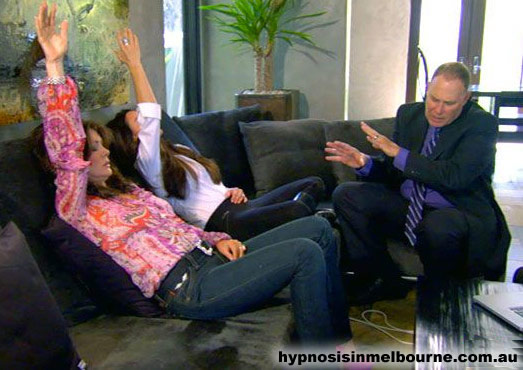Hypnotism: Hijacking Your Brain?
Today we’re going to point the skeptical eye at a topic that’s intrigued nearly everyone who’s thought about it: hypnosis. The hypnotist appears to have the ultimate superpower, the ability to persuade anyone to do or feel whatever he wants them to. For the subject, hypnosis appears to be the miracle cure to just about anything: lose weight, stop smoking, feel happier. We’ve all heard the basic plot points — that it can’t make you do anything you don’t want to do, that different people are susceptible to varying degrees — limitations that seem to negate the potential benefits. So what can it actually do, and might it be of any value to any of us?
Forms of hypnosis go back through history nearly as far as history itself. Even the earliest reported forms of deep meditation from India and Persia are considered to have been analogous to what we now refer to as self-hypnosis. Even the ancient Greeks are believed to have had practices comparable to Hindu sleep temples, where people would go to essentially become hypnotized to be put into a relaxed state as a presumed medical cure. But the history of hypnotism is associated with one name more than with any other: the 18th century German physician Franz Mesmer.
You probably already know that we get the term “mesmerize” from the name of Mesmer, but what you may not know is that the practice of mesmerism has virtually nothing to do with anything that Mesmer himself actually did. As a physician working with the current state of medical science in the 1700s, Franz Mesmer didn’t have much to go on. Like other researchers of his day, Mesmer put forth ideas that were not very sound scientifically. His particular theory was a form of vitalism — the idea that living beings are distinguished from inanimate objects by some kind of “life force” — that he called animal magnetism. Like most other forms of vitalism proposed over the centuries, Mesmer’s animal magnetism postulated that living beings were connected by a sort of energy flow, which Mesmer called magnetic fluid. One of his treatments, which he popularized while practicing in Paris, was to use his hands to govern the flow of magnetic fluid through a patient, in lengthy and relaxing sessions, intended to cure some ailment.
It was those who followed Mesmer’s work who coined the term mesmerism, but the practice was splintered into a number of unrelated directions. Magnet therapists called their procedures mesmerism. Spiritual healers in Russia called their procedures mesmerism. New Age healers in America called their practice mesmerism. Clairvoyants in England called what they did mesmerism. The connection to what we now call hypnotism came in 1841, when a traveling mesmerist who gave stage shows was going around London putting people into trances, calling it by Mesmer’s term animal magnetism. Dr. James Braid, a surgeon, happened to catch one of these shows, and had the opportunity to examine one of the subjects who had been rendered unable to open his eyes. He concluded, rightly it turned out, that the person was indeed in some different state of consciousness. Braid was fascinated, and researched the phenomenon voraciously. In 1843 he published his findings in a book that he titled Neurypnology. It was Braid who coined the term hypnosis.
Braid’s book, which may fairly be called the seminal work of modern hypnotherapy, was surprisingly in line with today’s understanding of hypnosis. Braid had quickly taught himself to hypnotize patients by having them fix their gaze upon an object held in front of their foreheads, in such a position that it put strain upon the eye muscles and required great concentration to maintain. He would speak to them calmly during the procedure, and once he observed their pupils dilate, he ascertained that they were hypnotized. This part of the process has since become known as the induction phase. As a doctor, he repeatedly found hypnotism useful as a treatment for what he called nervous complaints. He was able to successfully hypnotize patients and induce restful sleep, reduce muscle spasms and pain, and treat other symptomatic conditions.
Braid’s basic technique has been revised many times, and one of today’s most popular versions was developed in the 1950s at Stanford University, as the Stanford Hypnotic Susceptibility Scales. It’s a series of twelve short tests to gauge just how hypnotized you really are, scored on a scale of 0 (not at all) to 12 (completely). They are responses to simple suggestions like immobilization, simple hallucinations, and amnesia. Most people score somewhere in the middle, and nearly everyone passes at least one of the tests. There’s even a script you can follow to hypnotize anyone and put them through the scales, with a little bit of practice.
Not only do people score very differently, there’s been little progress made in predicting what types of people are most susceptible. Subjects’ suppositions about their own susceptibility don’t correlate at all with test scores. Supposed predictors like intelligence, creativity, desire to become hypnotized, and imaginativeness also have no correlation. Most likely, you yourself are a decent candidate who will score near the middle of the scale, regardless of whether you think you will or not.
At least one study has found a physiological difference in subjects who score highest on the Stanford scales. In 1999, grad student James Horton at Virginia Tech took eight people who scored a median of 11 and ten people who scored a median of 2 and took a look at their brains with an MRI. The high scoring group had a frontal section of the corpus callosum called the rostrum that was 32% larger on average than that of the lower scoring group. While interesting and suggestive of the value of further research, this was a small sample size and there may have been other factors.
In 2001, six staffers from Scientific American magazine who had never been hypnotized before underwent the test at their office in New York. It turned out they fit the demographic as well as anyone: their scores ranged from 3 to 8, and they reported the inability to move parts of their bodies, auditory hallucinations, and one even was made to forget everything that happened during his session — despite his best efforts — until being told that he could suddenly remember it all again.
So this raises the question of what hypnosis can actually do. It has real applications in medicine and in psychotherapy. In medicine, it has surprisingly been proven to be quite effective at pain management, in many clinical trials. One survey of 27 such trials found that 75 percent of some 933 patients found some pain relief from hypnosis. It has been shown that pre-surgical hypnosis can reduce the amount of anesthesia needed, and thus it also reduces the time needed in recovery and the severity of related side effects like nausea. It can reduce stress related hypertension. In fact, virtually all of the symptoms related to stress can be successfully mitigated in susceptible patients.
Many of us wonder about the common usages we hear about in psychotherapy, like stopping smoking, weight loss, or recovering lost memories. These are generally overblown. We like to think that we can go to a hypnotherapist who will make us no longer desire cigarettes or food, and snap like magic, the problem is solved. This is completely fictitious, as are most magically easy solutions in life. Whether hypnotherapy is effective at all in long-term behavior modification is something of an open question. Weight loss has shown good promise, but studies of using hypnosis to stop addictive behavior such as smoking or drug abuse have been much less successful. The difference is probably that weight loss is a matter of willpower alone, whereas addictions such as nicotine have additional physiological factors. Regardless, virtually all authorities agree that hypnosis should only be used to supplement conventional psychotherapy, and should not be the only tool relied upon.
The idea of recovering lost memories is highly controversial, and is no longer accepted as reliable. Hypnotherapists would lead the patient through age regression, to have them relive and re-experience a traumatic event. It is true that the focused, relaxed state does enable very strong and realistic recollections, but what we’ve learned is that these recalled experiences, though vivid, are no more accurate than any other memories. Similarly a dream can be extremely realistic, but as we know, dreams don’t necessarily reflect reality in the slightest. It’s essentially the same imaginative mechanism in your brain that creates dramatic and lucid dreams that creates the perception of a relived moment in age regression hypnosis. The prevailing view is that the subject is not actually reliving what happened, but rather is realistically imagining what it was probably like way back when, based in part on whatever recollections remain. Today, in many jurisdictions, hypnotically recovered memories are no longer admissible in court as evidence, since they’ve been proven to be too unreliable.
The biggest irony is that stage hypnosis, as practiced by showmen in front of audiences, is sometimes more real than these popular notions about clinical hypnosis. (We’re discounting the stage hypnotists who use plants in the audience, or who whisper secret instructions to the subjects, or who employ other chicanery not related to hypnotism.) Stage hypnosis generally is real hypnosis, just an extremely glib example of its most basic function. Think back to the show that James Braid witnessed, where a subject found himself unable to open his eyes. In all probability, that performance was the same exact thing that showmen do today. The basic program is to take a group of people, and hypnotize them through a basic induction phase, much like Braid described. The hypnotist selects a few people from this group, and administers something akin to an abbreviated Stanford scale, selects those who respond best, and dismisses the rest. A weakness with stage hypnotism is that there are always some subjects who are only pretending to go along, and perform according to audience expectations. However, as with the Scientific American staffers, plenty of stage hypnotism subjects report actually losing simple abilities during the show (forgetting their name, being unable to move, or experiencing hallucinations such as seeing people naked), but only so long as they were consciously willing to go along.
A lot of these shows end with the hypnotist laying a subject between two chairs and standing on her like a bridge, making it appear that hypnotism has given her super strength. The facts are that no such superpower becomes available during hypnosis, and he’s simply positioning the body and the chairs in a way that would make it possible anyway. But it’s unfair, and factually inaccurate, to dismiss all stage hypnotism as fake.
So live a little. Get hypnotized. See where you fall on the Stanford scale. Don’t shy away from an opportunity with a good stage hypnotist. You just might experience something that you never imagined your brain could do to you. You can’t lose control. And you might well discover a new tool available to you should you fall into the need for pain management, stress management, or psychotherapy. Walk the wilder side of neuroscience; it might turn into a thrill ride.



